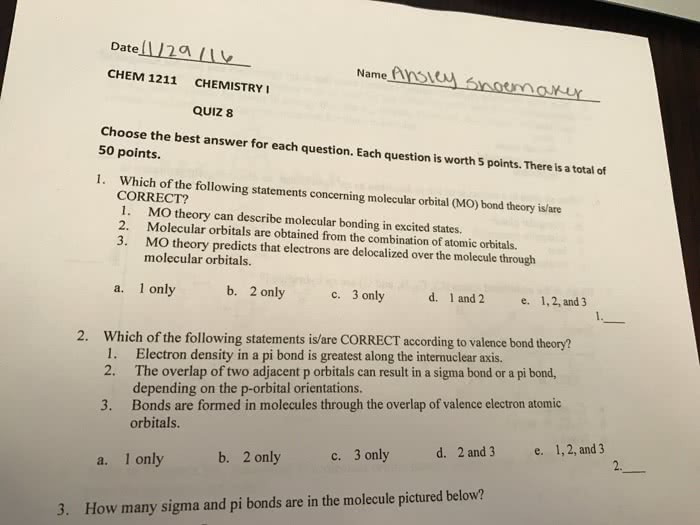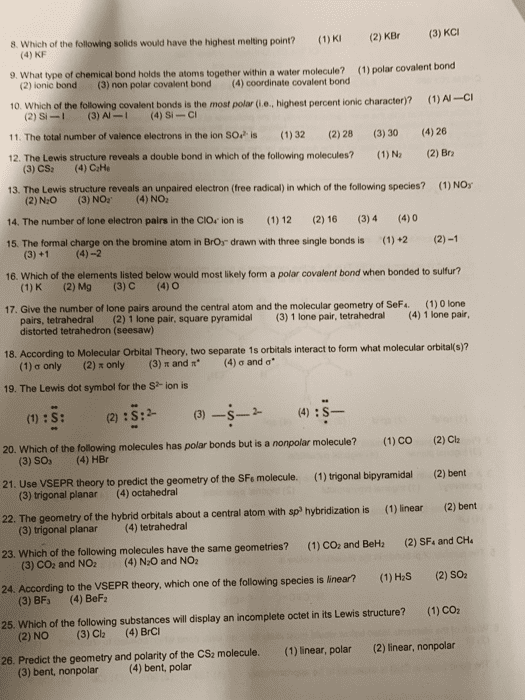CHEM 201 Study Guide - Final Guide: Valence Bond Theory, Neodymium Magnet, Pauli Exclusion Principle
Document Summary
If orbitals have same sign of the wave function- additive effect. Probability of finding an e- between the nuclei in the molecular orbital is reduced and the probability of find e- in other regions is higher. w/o significant e- density they will repel. **note: energy level diagrams are commonly used in describing bonding using mo theory, show relative energies of atomic orbitals of individual atoms and derived molecular orbitals. e- in bonding orbitals are lower than the parent 1s electron. Notice presence of anode between the nuclei of antibonding orbitals; node is a plane on which there is zero probability of finding e-. **note: bond order is the net number of bonding electron pairs lining a pair of atoms (cid:1867)(cid:1866)(cid:1856) (cid:1867)(cid:1870)(cid:1856)(cid:1857)(cid:1870)=(cid:883)(cid:884)(cid:4666)(cid:1866)(cid:1873)(cid:1865)(cid:1854)(cid:1857)(cid:1870) (cid:1867)(cid:1858) (cid:1857)(cid:1864)(cid:1857)(cid:1855)(cid:1872)(cid:1870)(cid:1867)(cid:1866)(cid:1871) (cid:1866) (cid:1854)(cid:1867)(cid:1866)(cid:1856)(cid:1866)(cid:1859) (cid:1871) (cid:1866)(cid:1873)(cid:1865)(cid:1854)(cid:1857)(cid:1870) (cid:1867)(cid:1858) (cid:1857)(cid:1864)(cid:1857)(cid:1855)(cid:1872)(cid:1870)(cid:1867)(cid:1866)(cid:1871) (cid:1866) (cid:1853)(cid:1866)(cid:1872)(cid:1854)(cid:1867)(cid:1866)(cid:1856)(cid:1866)(cid:1859) (cid:1871)(cid:4667) In the h2 molecule the bond order is 1, the hypothetical he2 has a bond order of 0.



